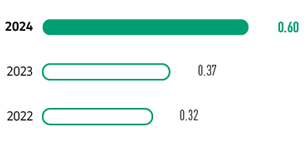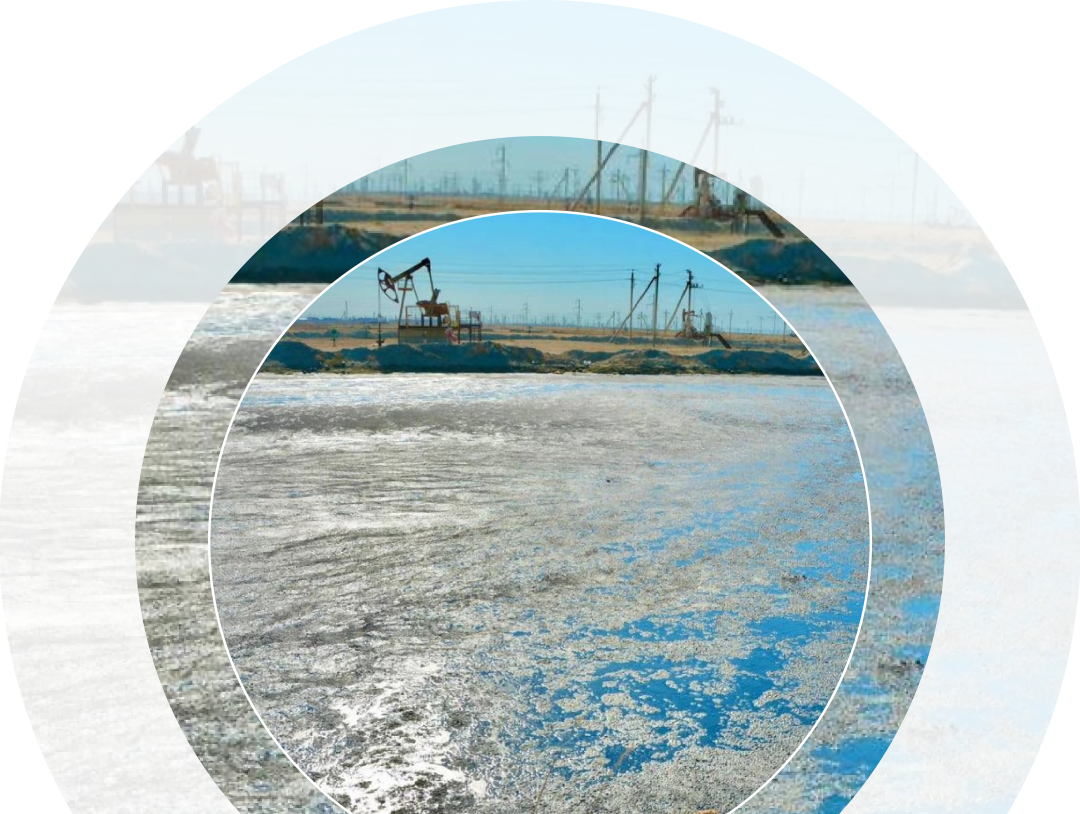Waste Management and Land Reclamation
GRI 306-1GRI 306-2GRI 306-3GRI 306-4GRI 306-5
KMG’s production activities generate various types of waste, including drilling waste, oil-containing waste, spent catalysts, chemical reagents, construction waste, used oils, and oily rags. In line with Kazakhstan’s national environmental policy and KMG’s Environmental Policy, the Company implements a comprehensive set of measures to reduce waste generation, ensure safe waste handling, and adopt environmentally friendly technologies.
In 2024, KMG approved a Corporate Standard on Waste Management, which sets out step-by-step responsibilities for subsidiaries and dependent entities in waste management. The document was developed to align KMG operations with the environmental legislation of the Republic of Kazakhstan and to improve waste management efficiency.
Waste Accounting and Management System
KMG maintains strict control over waste at all stages–from generation to disposal. A separate waste collection system has been introduced, taking into account the properties and volumes of waste. Waste tracking results are submitted to the authorized environmental protection authority and recorded in the HSE KMG information system.
The waste management process includes accumulation, landfilling, disposal, or transfer to specialized licensed contractors authorized for waste treatment and disposal. To reduce environmental impact from transportation, subsidiaries and dependent entities are encouraged to process waste on site or reduce movement where possible.
Waste treatment and recovery activities carried out by specialized contractors are monitored by KMG to ensure compliance with contract requirements and project specifications. If necessary, control laboratory tests are conducted on recovered waste.
In 2024, KMG allocated KZT 18.9 billion for waste treatment and recovery activities.
WASTE MANAGEMENT INDICATORS IN 2024, THOUSAND TONNES
|
Type of Waste |
Generated Waste |
Waste Sent for Processing/Utilization |
Waste Sent for Disposal and Placement |
|---|---|---|---|
|
Hazardous Waste |
358.08 |
1,452.99 |
- |
|
of which drilling waste (drilling mud and cuttings) |
179.6 |
179.6 |
- |
|
Non-Hazardous Waste |
79.7 |
54.7 |
16.5 |
|
Total: |
437.7 |
1,507.6 |
16.5 |
8The amount of generated waste is presented, taking into account the volumes of waste generated by contractors performing work at the facilities of KMG subsidiaries.
9Taking into account the volumes of historical waste recycling, as well as the carryover volume from the previous year.
RATIO OF THE AMOUNT OF WASTE RECYCLED TO THE AMOUNT OF NEWLY GENERATED WASTE, T/T

RATIO OF THE AMOUNT OF RECYCLED WASTE TO THE AMOUNT OF ACCUMULATED AND NEWLY GENERATED WASTE, T/T
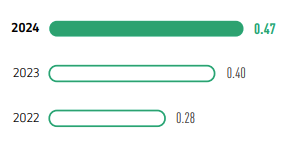
Remediation of Historical Pollution and Land Reclamation
KMG continues its efforts to dispose of historical oil-containing waste and clean up contaminated land at MMG, OMG, KBM, and EMG facilities.
In 2024, 1,099 thousand tonnes of historical waste were disposed of, the areas where the waste had been stored were reclaimed, and work began to assess the remaining volumes of oil waste. The total area of reclaimed disturbed land amounted to 172 hectares.
KBM has fully eliminated historical pollution within its contract territory, having disposed of 518,879 tonnes of historical oil waste during the 2021–2024 period.
A waste pit in the coastal zone of the Caspian Sea was eliminated, along with three land pits, and 246 oil-contaminated sites were cleaned up within the Karazhanbasmunai contract area.
EMG also completed the remediation of historical oil-contaminated land within its contract areas and continues eliminating pollution beyond those boundaries in accordance with the approved land reclamation project and the conclusion of the State Environmental Expertise.
KMG continues to implement comprehensive measures aimed at reducing the volume of waste, increasing the level of waste recycling, and minimizing environmental impact – an essential component of the company’s sustainable development strategy.
HISTORICAL WASTE RECYCLED, THOUSAND TONNES
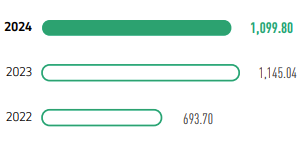
RATIO OF THE AREA OF CONTAMINATED LAND AT THE END OF THE YEAR TO THE AREA AT THE BEGINNING OF THE YEAR, HA/HA
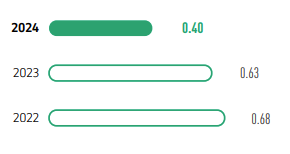
RATIO OF THE AREA OF LAND RECLAIMED DURING THE YEAR TO THE AREA OF CONTAMINATED LAND DURING THE YEAR, HA/HA
